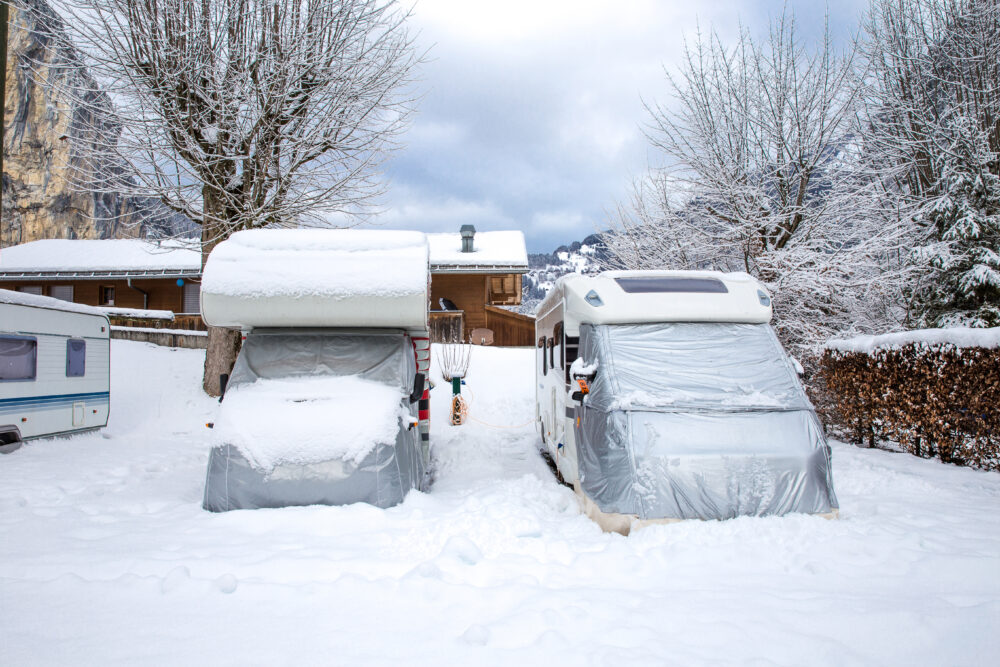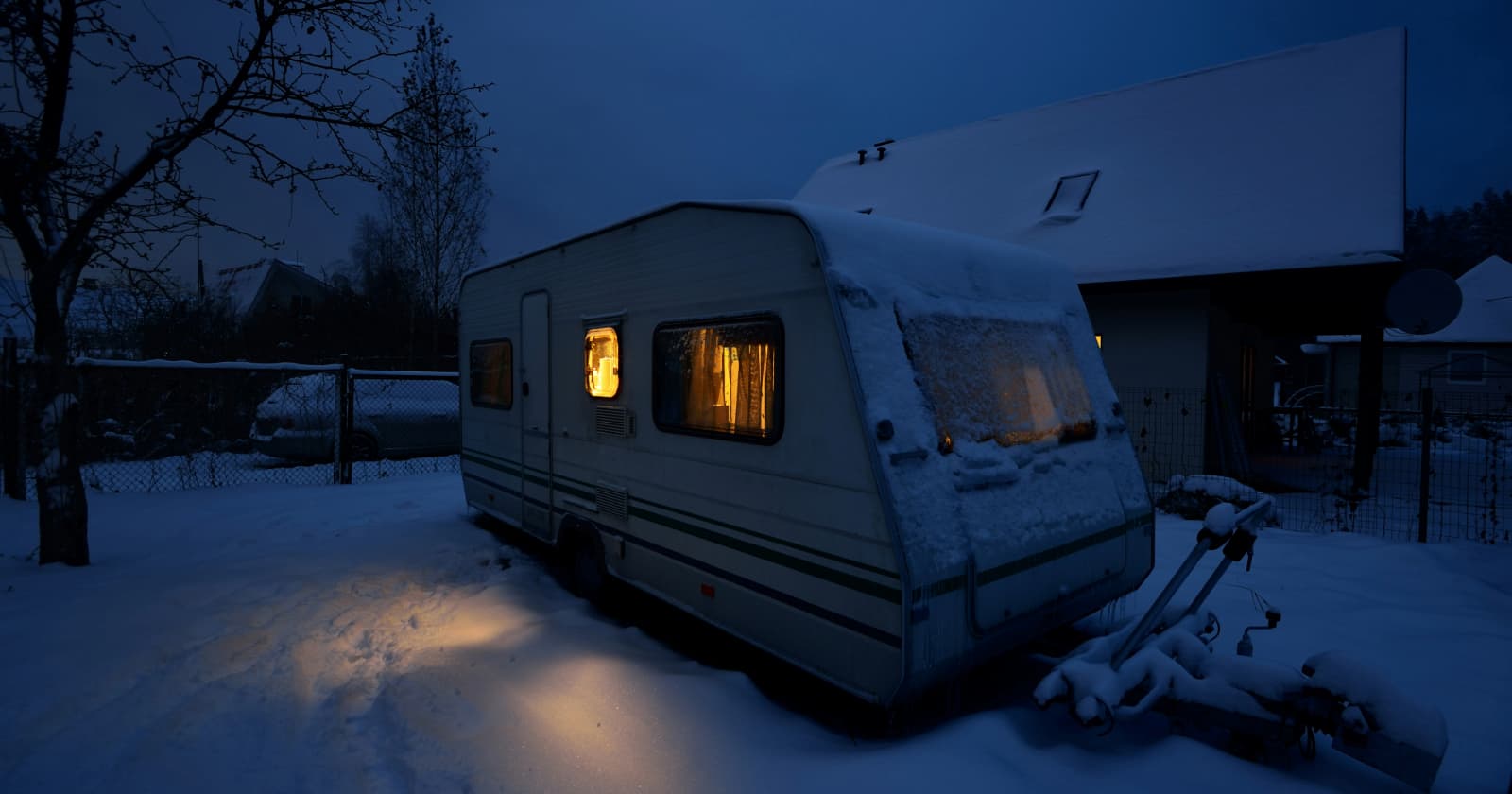
Do RV Covers Cause Mold?
Unless you live in it full time or have some form of shelter to store it under, your RV probably spends a lot of time sitting in your driveway, exposed to all kinds of weather. The sun’s UV rays, rain, sleet, and snow can all wreak havoc on your RV roof, graphics, and more. There’s no doubt that covering your RV with a waterproof, breathable RV cover can really help to prevent a lot of problems caused by moisture and UV rays.
However, you might be wondering if dressing your rig in a specialized cover will help to make a welcoming place for mold and mildew (two of any RV’s worst enemies). In this article, we’ll take a look at RV covers and how you can protect your RV from the elements without causing mold or mildew.
Don’t use a tarp
Using a tarp to protect your RV might seem like a good idea at first. It’s true that a tarp can be better than nothing in some situations as a temporary, short-term measure. However, because tarps are made from polyethylene, they don’t allow atmospheric moisture to escape. This vapor tends to condense under the surface of the tarp. This is the kind of stuff mold loves. Tarps tend to deteriorate relatively quickly too. It doesn’t take long before they are worn and torn by the sun and wind. For this reason, you should only ever use a poly tarp on your RV as a temporary solution.
How To Protect Your RV From The Weather
Waterproof, breathable, purpose-made RV covers protect your RV from UV rays, rain, and snow. Unlike using a tarp on your RV, you don’t need to worry about creating a hospitable environment for mold and mildew when you use an RV cover. That’s because moisture won’t get the chance to condense. A good RV cover is made from multi-layered polyester material that has tiny pores that are too small for water droplets to enter. However, these pores still allow moisture to escape.
In short, RV covers are designed to allow moisture to escape so that mold doesn’t have the moist environment it needs to thrive. Not only that, but these covers also shade your RV from the heat of the sun to prevent damage from high temperatures in summer.
What to look for in an RV cover
No matter what type of rig you have, there’s a perfect-sized cover for your RV. Whether you have a 40-foot Class A motorhome or a tiny travel trailer, you can get one that is a perfect fit. In addition to choosing the right size for your RV, there are some other things you should know about too.
- Don’t get the cheapest cover you can find. You’re better off spending a little more for better quality and workmanship.
- Choose a light color to reflect sunlight and provide the best protection from high temperatures.
- Look for a cover that is made with weather-resistant fabric to provide the best protection from rain and snow.
- To avoid mold and mildew, choose a cover made from a breathable material like polyester. Any cover made of polypropylene will cause the same problems as a tarp.
- Look for a cover that has vent flaps and elastic straps at the bottom to help prevent tears when it’s windy.
How to put an RV cover on
The actual act of putting an RV cover on your RV might seem a little daunting, especially if you have a large rig. However, having a system will make it easy. Start with a clean, dry RV.
- Start on the roof
- Unroll or unfurl the cover
- Drape it over the RV, starting at the front and working your way to the back
- Connect the straps
- Stand back and admire your work
Conclusion
If you don’t have indoor storage or an RV shelter, a good cover is a wise investment. RV covers typically don’t cause mold. As a matter of fact, it’s quite the opposite. An RV cover will help to protect your RV from the weather so that mold can’t grow. RV covers are made for all types of RVs, so finding one to fit your rig perfectly is usually easy. In the end, you’ll be glad you made the investment when your rig is ready to go whenever you need to get away.
Forums such as iRV2.com and blog sites like RV LIFE, Do It Yourself RV, and Camper Report provide all the information you need to enjoy your RV. You’ll also find brand-specific information on additional forums like Air Forums, Forest River Forums, and Jayco Owners Forum.




Here’s a problem I never encountered until recently…the compression clamps on the rubber couplings that connects the the black & gray water discharge valves should be checked every few years to make sure the band clamps are snug. My “black water valve” disconnected from the manifold (probably when I hit a big bump) and the tank slowly unloaded as I was driving. It was a smelly, messy task to fix but luckily nothing broke and it only needed to be reassembled & cleaned up